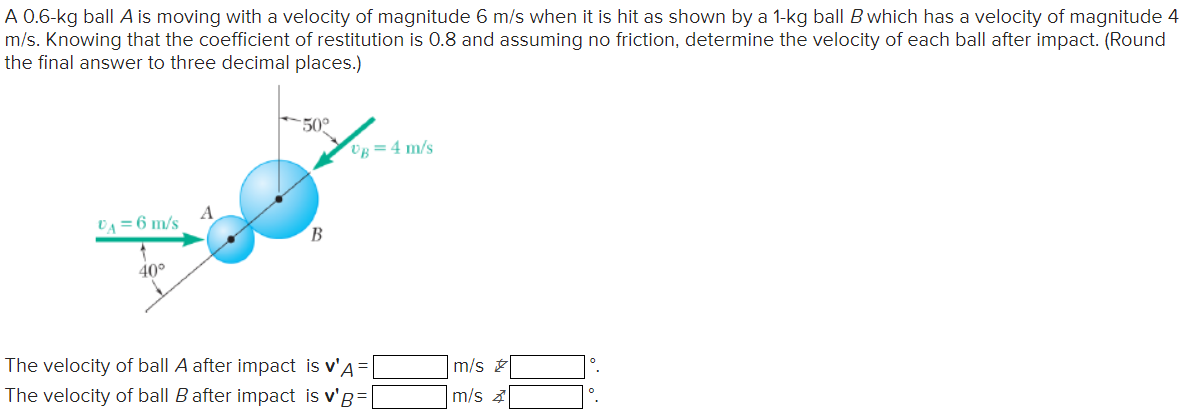A 0.6-kg ball A is moving with a velocity of magnitude 6 m/s when it is hit as shown by a 1-kg ball B which has a velocity of magnitude 4 m/s. Knowing that the coefficient of restitution is 0.8 and assuming no friction, determine the velocity of each ball after impact. (Round the final answer to three decimal places.) The velocity of ball A after impact is v′A = m/s ∘. The velocity of ball B after impact is v′B = m/s Z ∘.
